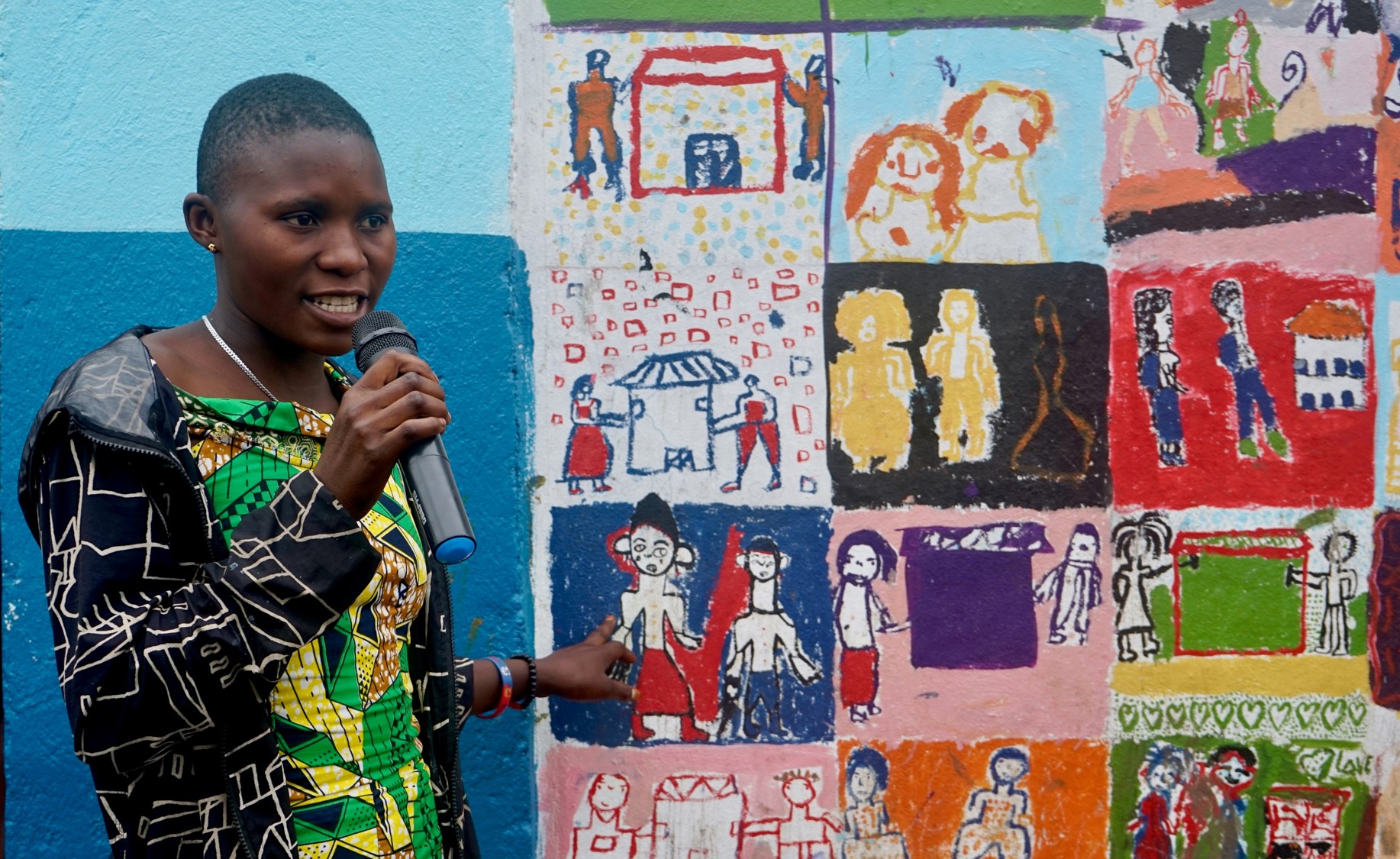
Mission
The mission of Colors of Connection is to engage youth from conflict-affected countries and their communities through collaborative art-making to promote hope, well-being, and self-determination in the pursuit of social justice.
Life Challenges of the Women Served
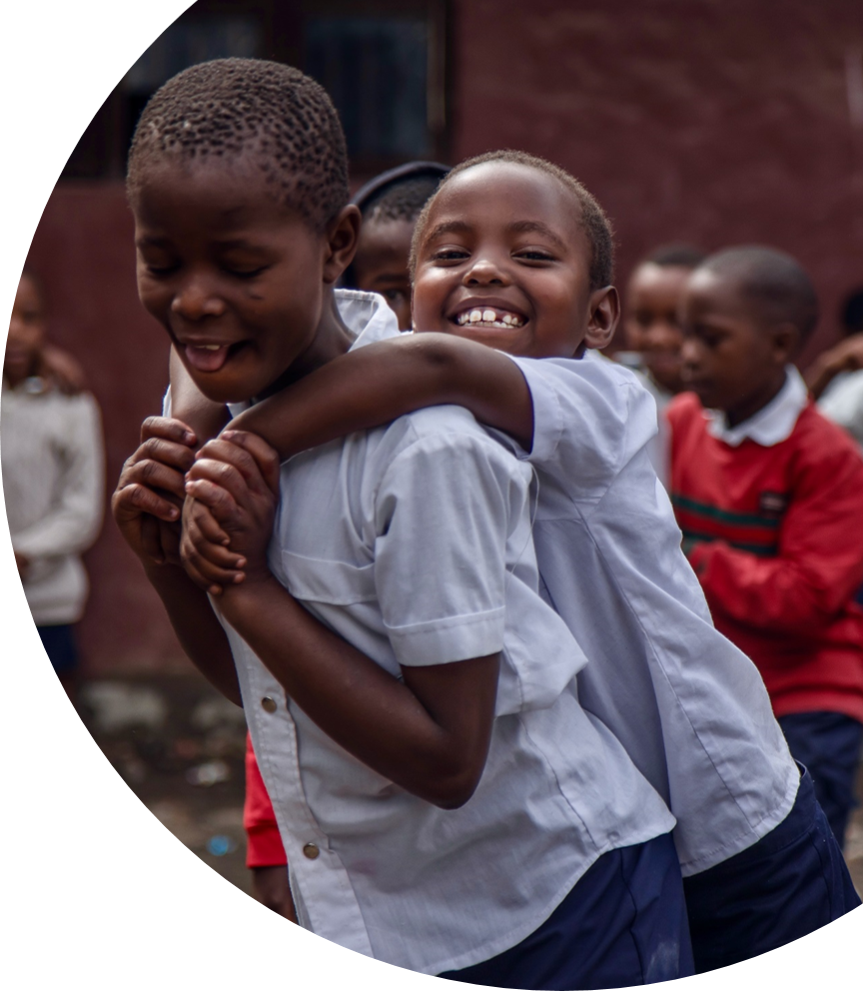 Adolescent girls in Democratic Republic of the Congo (DRC) face daily risks often leading to abuse, exploitation, and denial of their basic human rights. Underlying these experiences is pervasive and deeply entrenched gender discrimination that consistently excludes girls from societal benefits and protections. These harmful gender norms coupled with extreme poverty and conflict exacerbate existing gender-based violence and discrimination in the DRC. These girls are isolated and blocked from accessing essential resources. Without sufficient support or investment, these women and girls remain marginalized and oppressed, lacking the tools and resources to make positive change for themselves and their families and communities.
Adolescent girls in Democratic Republic of the Congo (DRC) face daily risks often leading to abuse, exploitation, and denial of their basic human rights. Underlying these experiences is pervasive and deeply entrenched gender discrimination that consistently excludes girls from societal benefits and protections. These harmful gender norms coupled with extreme poverty and conflict exacerbate existing gender-based violence and discrimination in the DRC. These girls are isolated and blocked from accessing essential resources. Without sufficient support or investment, these women and girls remain marginalized and oppressed, lacking the tools and resources to make positive change for themselves and their families and communities.
Gender discrimination dictates the daily lives of girls in DRC, over time eroding their mental health, education, income earning capacity, maternal and child health outcomes, and social support systems. Research on girls’ programming across the globe, observations from Colors of Connection’s previous work with girls in Goma, and data from the 2009 Girl Roster survey confirm that by age 10 – 12, girls are already missing basic protections and guarantees. As they move through adolescence, these resource gaps worsen and the likelihood of going off track greatly increases.
Adolescence poses challenges to many girls who are marginalized. Domestic violence, rape and being forced into early marriages are not uncommon. DRC has the ninth highest number of child brides in the world, estimated at 1.3 million, and the majority (64 percent) of girls ages 15 – 24 have experienced forced sex with varying degrees of violence for their first experience. They typically do not have anyone they can rely on in case of emergency and therefore the chance to articulate their experiences of oppression are rare. One participant shared that she was raped by her brother-in-law and had a child. With no feasible alternative, she continues to live in the same compound with the rapist – without her sister or anyone in the family knowing what happened to her.
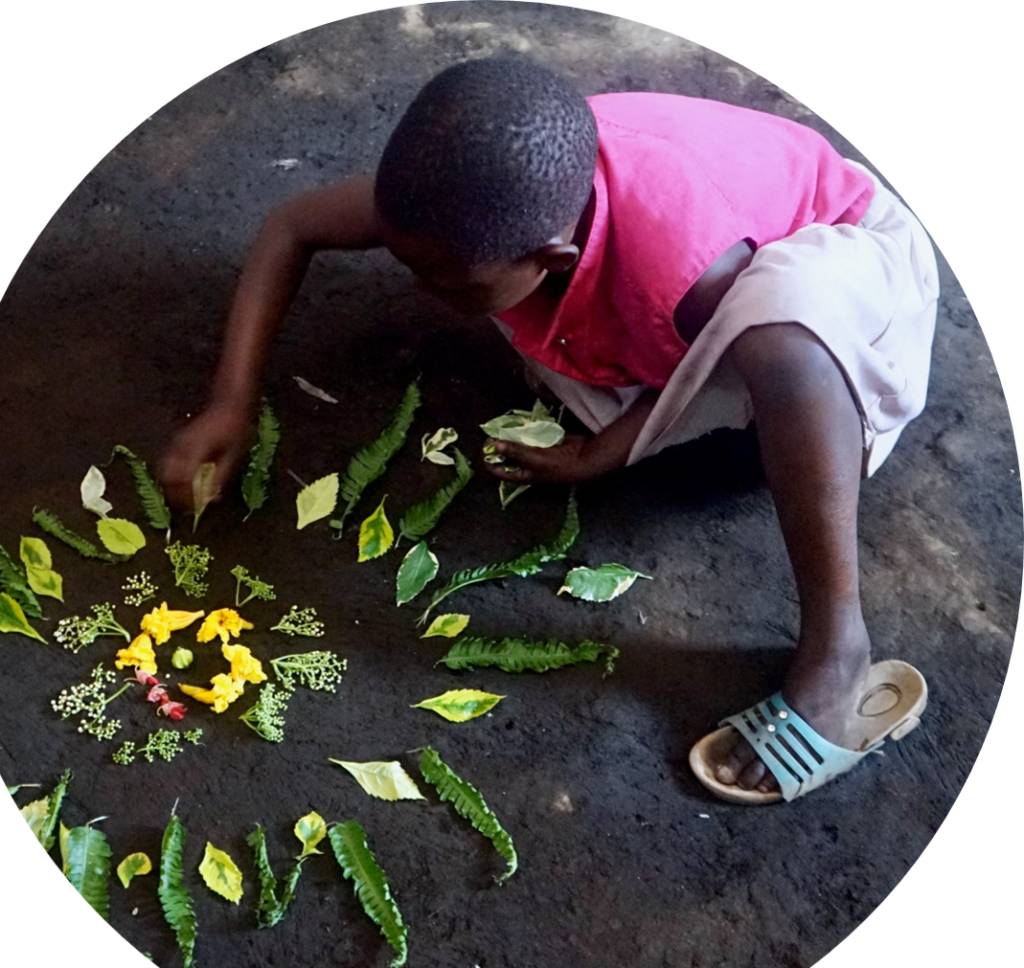 DRC has the third largest population of poor residents globally. Roughly one of six people living in extreme poverty in Sub-Saharan Africa live in DRC. In 2018, an estimated 60 million people – 73 percent of the population – lived on less than $1.90 per day. Goma, Eastern DRC, is a region that has been affected by war for decades. This sustained conflict has aggravated harmful beliefs and norms about women, increasing sexual and gender-based violence (SGBV) and even normalizing it. COVID-19 has intensified the marginalization and violence girls and women experience and made the need to invest in their resilience and recovery even more urgent.
DRC has the third largest population of poor residents globally. Roughly one of six people living in extreme poverty in Sub-Saharan Africa live in DRC. In 2018, an estimated 60 million people – 73 percent of the population – lived on less than $1.90 per day. Goma, Eastern DRC, is a region that has been affected by war for decades. This sustained conflict has aggravated harmful beliefs and norms about women, increasing sexual and gender-based violence (SGBV) and even normalizing it. COVID-19 has intensified the marginalization and violence girls and women experience and made the need to invest in their resilience and recovery even more urgent.
Bujovu is one of the most resource-poor and crime-affected neighborhoods in Goma. More than half the women (52 percent) in this area have experienced physical violence. Bujovu has the second highest poverty level (43 percent) among 18 neighborhoods. It also ranks as second lowest in access to health services. Education is not encouraged. In fact, there are more brothels (24) in Bujovu than primary schools (21). Only 37 percent of girls and women (ages 15 – 49) complete primary school, and 15 percent have no formal education. In Bujovu, more than half of all girls ages 10 – 12 fall into at least one of these categories: out-of-school, married, have a child, and/or live with no parents or a single parent. By the time a girl is 15, her odds of being in one of these categories rises to 83 percent. Because of the impact that a girl has on her family, community and country, the problem is perpetuated and many are locked into intergenerational violence and poverty.
Investing in girls’ health and wellbeing translates to overall peace and development of nations. With every year of school a girl completes, her income earning capacity increases by 5 to 15 percent, which improves her and her family’s outcomes. Research shows that women earning an income dedicate that income to their children and families at a rate 10 to 20 times greater than men. These outcomes matter to the larger context of a nation. There are strong correlations between the poverty levels of a country and its level of gender inequalities, and a connection between how likely a country is to go to war and its levels of gender-based violence. Without effective and targeted programming to reach marginalized girls, the cycles of trauma, poverty, and gender inequality threaten to repeat and intensify, thus impacting a country’s development and security.
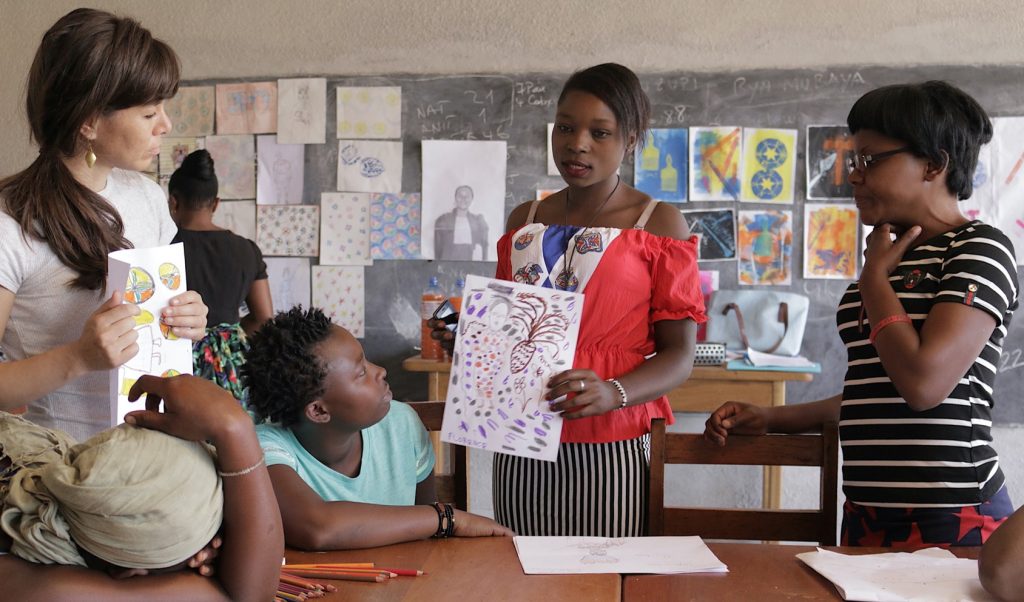
The Project
Colors of Connection’s Girl Awakening (GA) is a year-round, art-based program for marginalized adolescent girls in Goma, DRC, in partnership with local organizations. It provides girls with the essential life skills they need to keep themselves mentally and physically safe and healthy and develops them as leaders who advocate for gender equality in their communities. Through art-making, community building, and an emphasis on gender equality, the GA program helps 10- to 12-year-old girls stay in school. It also provides a mentorship program for older girls ages18 – 24 who mentor the younger girls. Supporting these girls when they are young helps prevent them from experiencing teenage pregnancy, school dropouts, transactional sex, and child marriage. The Girl Awakening program reaches these girls during a critical time when it is possible to change the outcome of their lives.
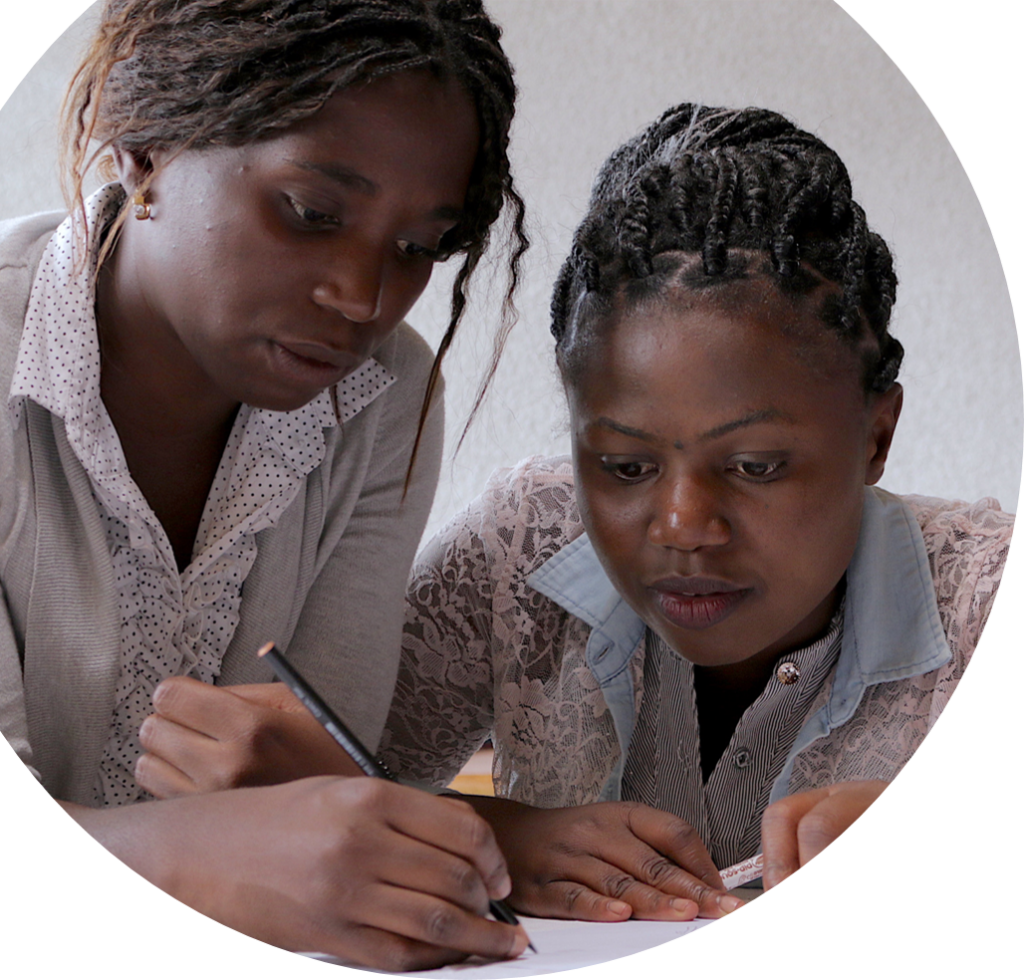 Girls and women are positioned in their families as central connectors and supporters, emotionally, and economically, with a profound impact on the well-being of both older and younger members of the household. However, their marginalized citizen status prevents them from exercising their full personal potential and therefore their overall positive influence on the family and community. By providing targeted programming and support to young girls, Colors of Connection assists them in uplifting themselves, their families, and future generations of both girls and boys who become women and men: the community.
Girls and women are positioned in their families as central connectors and supporters, emotionally, and economically, with a profound impact on the well-being of both older and younger members of the household. However, their marginalized citizen status prevents them from exercising their full personal potential and therefore their overall positive influence on the family and community. By providing targeted programming and support to young girls, Colors of Connection assists them in uplifting themselves, their families, and future generations of both girls and boys who become women and men: the community.
Humanitarian and development efforts systematically overlook the pivotal roles of gender equity and mental health in growth and recovery. A growing body of research shows that mental health and recovery from trauma are vital to long-term recovery for individuals, communities, and nations.
Research also proves that gender equity is fundamental to conflict-affected nations stabilizing and transitioning to peace and democracy. Colors of Connection is working to meet these two core needs, so often unmet, through the unique power of the arts and to shift the current wisdom about how best to support conflict-affected regions. Colors of Connection seeks to invest in societal change – with the understanding that this is synonymous with investing in the individual and community levels.
Women’s leadership and self-sufficiency is nurtured in all aspects of the Girl Awakening program. Adolescent girls learn how to advocate for their rights and needs, develop leadership skills, learn about civic engagement, and receive support to participate in formal education, all of which cultivate their ability to be self-sufficient. Young women of the community provide mentorship and role modeling to the participants, and young women staff lead the program. This model presents opportunities for sustainability with its cascading leadership design: participants can become future mentors, and mentors can become future staff.
This year-round program is composed of four components:
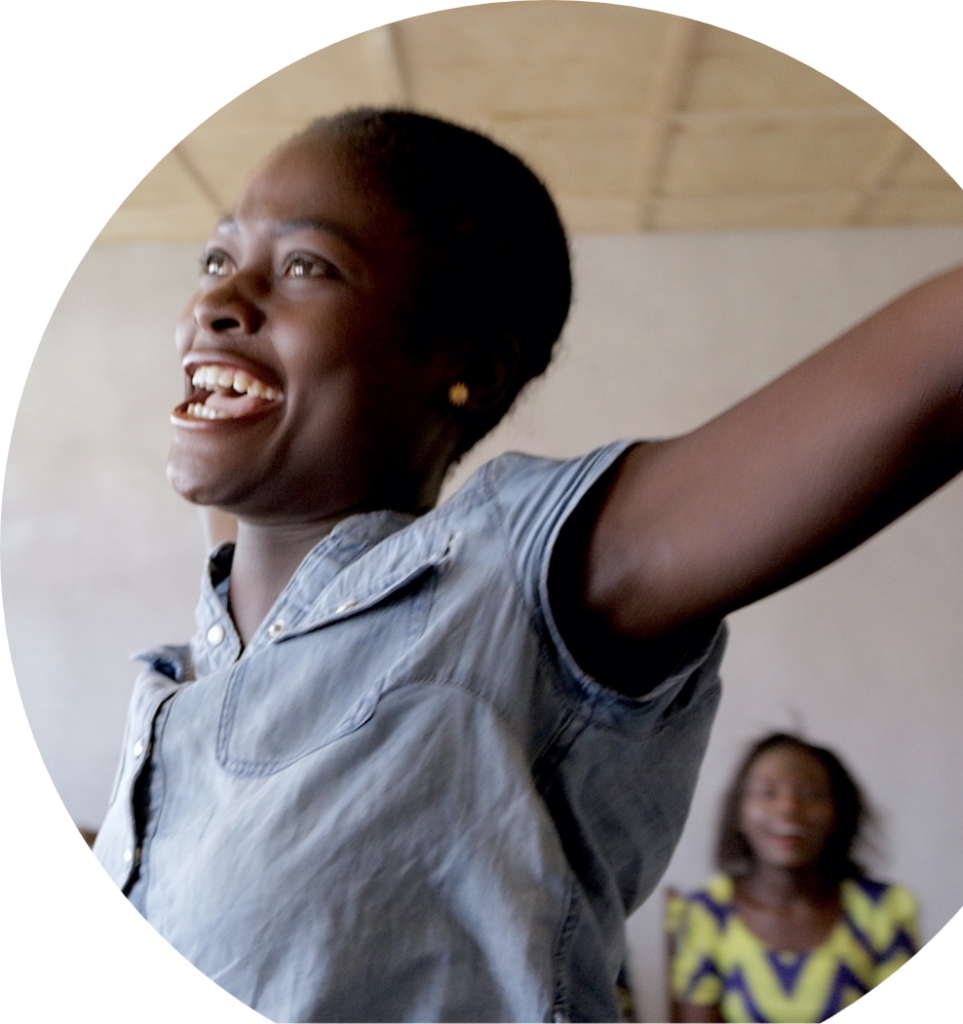 Art and life skills sessions – This consists of weekly sessions of two to three hours each with groups of 20 out-of-school girls (260 total). All the girls are 10 – 12 years old from a small area of the Bujovu neighborhood where community resource and risk mapping indicate higher security risks and poverty levels. Recruitment focuses in a geographically concentrated area so that participants can better provide social support to each other, to work in solidarity, and therefore have greater influence on shifting gender norms within their community.
Art and life skills sessions – This consists of weekly sessions of two to three hours each with groups of 20 out-of-school girls (260 total). All the girls are 10 – 12 years old from a small area of the Bujovu neighborhood where community resource and risk mapping indicate higher security risks and poverty levels. Recruitment focuses in a geographically concentrated area so that participants can better provide social support to each other, to work in solidarity, and therefore have greater influence on shifting gender norms within their community.
Activities connect girls with community resources, and build skills and knowledge in health, financial literacy, self-esteem, leadership skills, and civic engagement. Colors of Connection uses arts-based activities (painting, drawing, movement, music) to explore and solidify learning. The sessions will be run by eight mentors (see below) working in pairs of two per group of 20 girls with training and support from CC and TES – Tulizo Elle Space staff including two artists and 40 community stakeholders who will meet quarterly and provide guidance and support for the program.
An arts-based approach to addressing mental health is particularly well-suited for low-resource settings. Arts approaches can be administered with low-cost materials and transferable skills/competences, and are also contextually fluid, as all cultures have creative expression. Group support programs are also practical for scaling up in low-resource environments, in terms of issues of cost, access, and competency.
In Goma, it is so unusual for young women and girls to work and be active in their communities that participants are pioneers in their communities just for participating. The murals created by participants promote an empowered role for women, depicting them in occupations that are believed to be for men, such as doctors and construction workers.
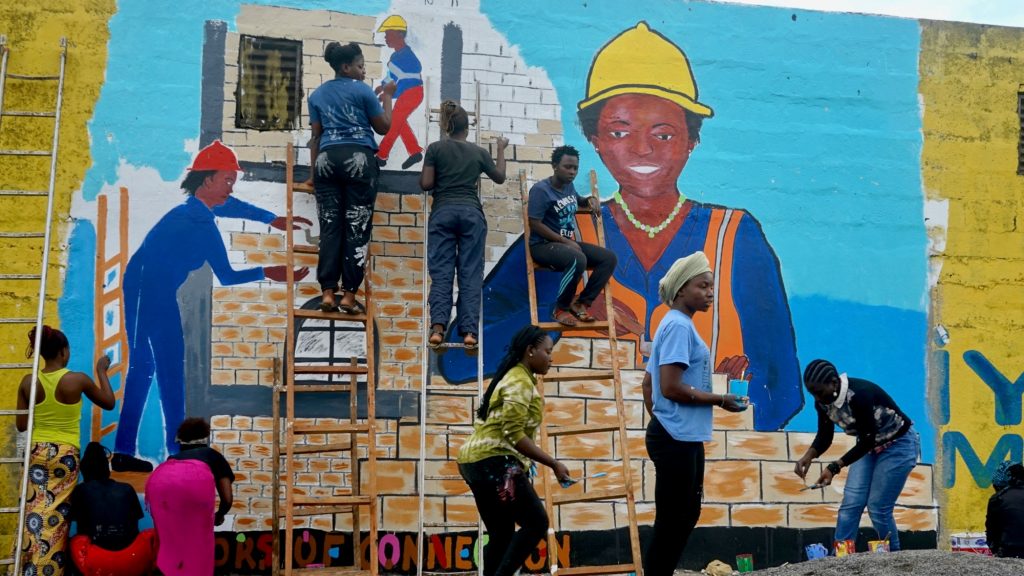
Public art engagement – Participants will create four large scale public art murals. Subject matter is centered on gender equality issues and developed collaboratively with the Community Arts Council and the girls themselves. Community Arts Council discussions let participants formulate an approach to prevent and address GBV and other risks to girls in their community. Next, the girls themselves design and produce these works in lively public spaces in the Bujovu neighborhood. While creating murals and posters, girls exercise and strengthen the skills they have learned during the program such as leadership, creative expression, challenging social norms, and connecting in a more meaningful and empowered way to their communities. To increase community engagement, girls, with support from mentors and staff, will hold community forums to present and dialogue about the girls’ rights, preventing GBV, and the public artworks created.
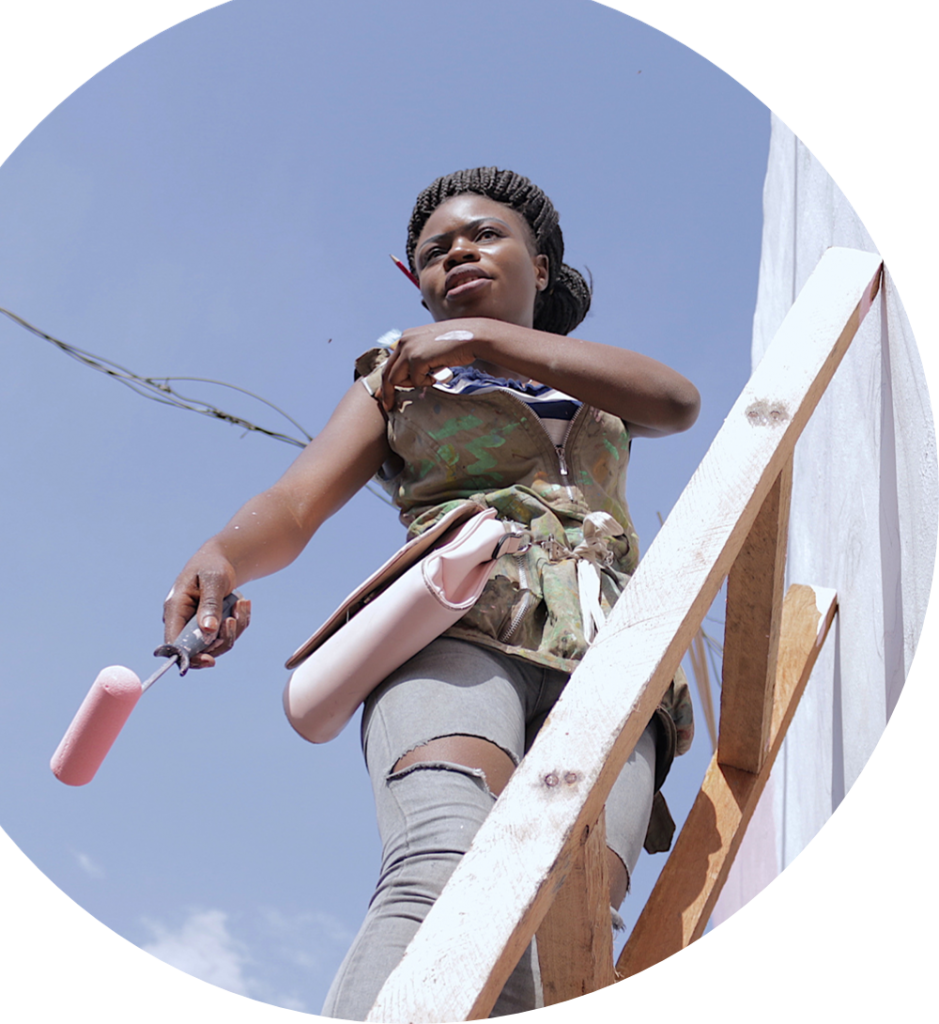 Mentorship – Eight girls and young women ages 18 – 24 with a higher than average education level (having completed some level of secondary school) will receive ongoing training and a stipend for delivering program content and individual accompaniment of girls as needed. This mentorship program validates girls who have already pursued an education and it shows all girls and the broader community that there is value to investing in girls’ education.
Mentorship – Eight girls and young women ages 18 – 24 with a higher than average education level (having completed some level of secondary school) will receive ongoing training and a stipend for delivering program content and individual accompaniment of girls as needed. This mentorship program validates girls who have already pursued an education and it shows all girls and the broader community that there is value to investing in girls’ education.
Scholarship support for girls to attend formal school – All girl participants are eligible for financial scholarships to pay for school tuition and associated school fees if they choose to attend school. The long-term goal is to offer scholarships for girl participants to complete their secondary education. Girls are supported by a staff member who will liaise with parents and guardians, make payments to schools, and meet with students to track their experience and progress.
The project serves 260 girl participants, 167 community members attending community forums, 40 community stakeholders, five young women staff members of the local partner organization TES – Tulizo Elle Space, and an estimated 15,000 women and girls in the Bujovu community. This broader community will benefit from viewing the public murals and posters that promote female empowerment and gender equality. They will also benefit from foundational investment in female empowerment and the incalculable societal benefit that flows from female individuals being given the opportunity for self-expression, health and well-being.
Direct Impact: 15,623;
Indirect Impact: 48,000
UN Sustainable Development Goals
![]()
![]()
![]()
![]()
Questions for Discussion
- How do you think the mentorship component of this program benefits both the young and older girls – mentors and mentees?
- The murals and other artwork offer visible proof of participation after the program ends. How does this add to the long-term benefit for participants and community members?
- Do you think it is important that the girls come from the same general neighborhood? Why or why not?
How the Grant Will be Used
Together Women Rise’s grant of $47,250 will help fund the following:
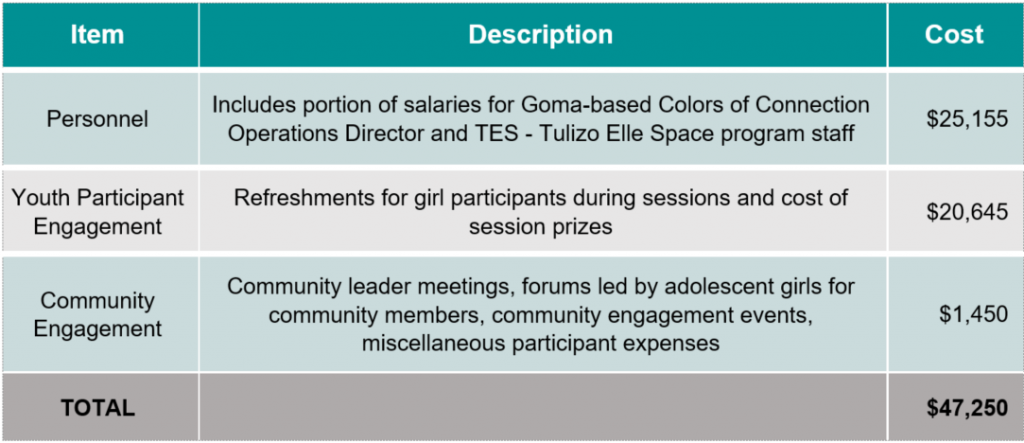
Why We Love This Project/Organization
Colors of Connection focuses on adolescent girls in East and Central Africa. It is a unique non-profit that engages in psychosocial arts engagement, public mural making, community building and violence prevention in conflict and post-conflict areas. Communities are encouraged to use art and art activities to create a platform to emphasize important values, make sense of traumatic experiences, generate problem-solving techniques and coping skills, and enhance self-confidence.
Evidence of Success
Colors of Connection has successfully completed eight projects located in refugee camps and post-war areas in Sub-Saharan Africa, reaching an estimated 200,000 residents through a public mural-making process. The projects have addressed sexual violence, health promotion, peaceful cohabitation between ethnic groups, education for girls, and human rights through the collaborative creation of 17 large murals and 27 posters.
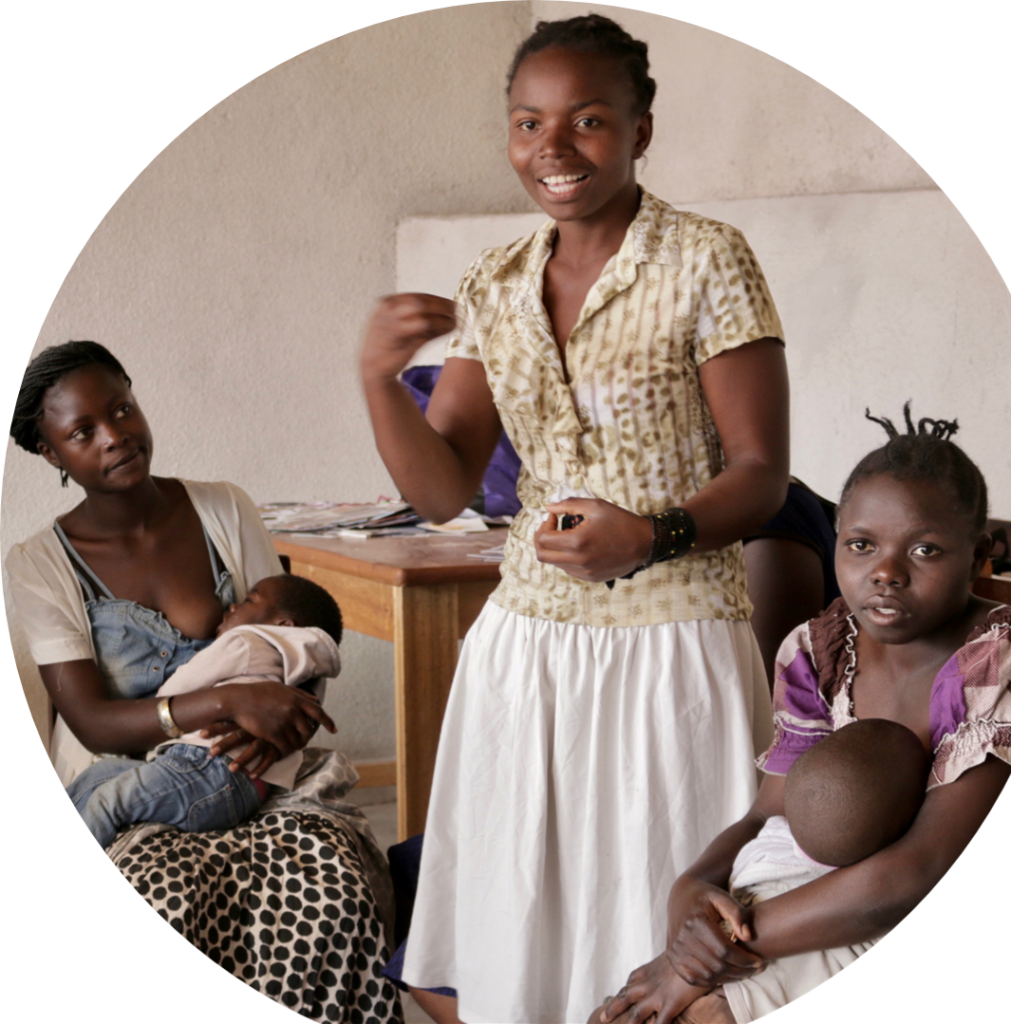 Colors of Connection’s work has a dramatic impact on the lives and well-being of participants. This is due to a multi-faceted approach that provides resources, safe spaces, and nurturing through an approach that allows for creativity and self-expression. Girls gain improved standing in their families and communities and are seen as more valuable. This contributes to reduced incidences of GBV and discrimination. Girls gain confidence and belief in their own internal capabilities and report having much improved peer support networks, and community members report improved perceptions of girls and their ability to contribute to society.
Colors of Connection’s work has a dramatic impact on the lives and well-being of participants. This is due to a multi-faceted approach that provides resources, safe spaces, and nurturing through an approach that allows for creativity and self-expression. Girls gain improved standing in their families and communities and are seen as more valuable. This contributes to reduced incidences of GBV and discrimination. Girls gain confidence and belief in their own internal capabilities and report having much improved peer support networks, and community members report improved perceptions of girls and their ability to contribute to society.
The organization’s work has also sustained girls and women in their pursuit of education. Since Colors of Connection began its scholarship program, five girls that were not attending school have earned their high school diplomas. The most recent project enrolled 80 girls in school.
Colors of Connection has earned the GuideStar Gold Seal of Transparency.
Voices of the Girls
“My fellow participants have become more like my sisters than just my friends. Before starting the project, I only had two friends. Now I have so many.” – 2019 Tunaweza Portraits participant
“My daughters were afraid of life and people. They are very shy and have problems expressing themselves. They are very withdrawn. But since they started attending the Girl Awakening program, it has been good for them because they have become more outgoing than before, and I have seen my daughters get closer and confide in me, which had not happened before. I didn’t know how to broach the subject of menstruation with them because talking about it seemed awkward to me, but with all the information they already received at the space, it made it easier for me to broach the subject with them.” – Mother of twin girls in the Girl Awakening program
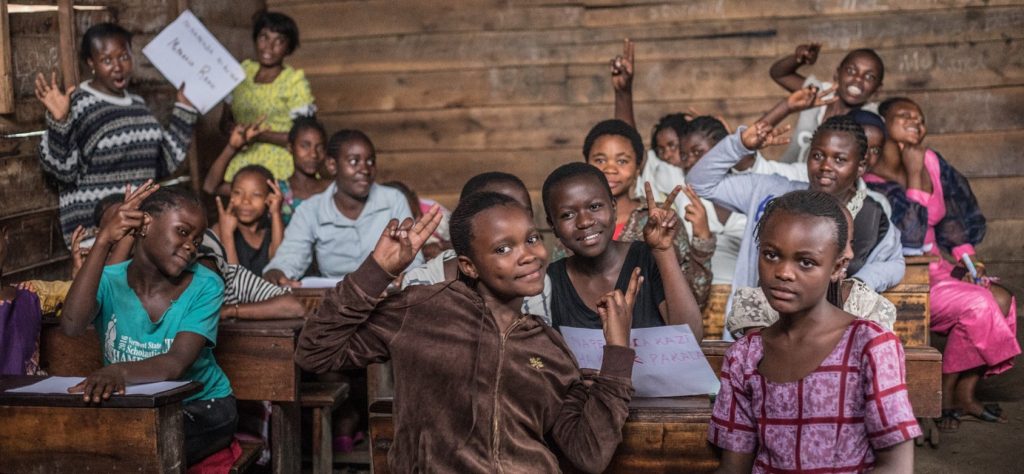
“Both the process and the product are important in showing what girls are really capable of.” – Community stakeholder
“When I see the paintings of the houses and my drawing on the mural, I am very proud of myself. Sometimes I can’t believe that I am the one who did the painting and drawing. I am very happy that I have made my neighborhood beautiful again and have given smiles to the community members and myself.” – Participant
“My daughters didn’t understand what I told them to do or took my advice. (One) even had suicidal and rebellious thoughts. She thought she was not loved and often said she was going to kill herself. Since they started attending the Girl Awakening Program, they understand me, they are motivated, they have found interest and hope in life.” – Mother of two participants
“This program has brought me closer to my mom. Whenever I need to discuss about things that concern sex she gives me time and listens to me. I feel that there is a consideration for me and that gives me esteem and confidence” – Participant
“I still can’t believe it, me with the uniform, school bag and notebooks going to school. Something I never imagined for a moment in my life. I already learned how to write my name and I have friends with whom I discuss the subjects I learned at school. Every day I have been practicing hygiene thanks to what the mentors shared during the sessions. May this program continue so that I can learn more.” – Participant
About the Organization
Colors of Connection is a 10-year-old, US-based 501(c)(3) nonprofit focused on psychosocial arts engagement, public mural making, and community building in conflict and post-conflict areas, with a focus on adolescent girls and violence prevention in East and Central Africa. The organization is based in Brooklyn, NY. Its mission is to engage youth from conflict-affected countries and their communities through collaborative art-making to promote hope, well-being, and self-determination in the pursuit of social justice. Today, Colors of Connection works primarily in the DRC with adolescent girls and their communities. The organization’s inaugural project began in post-war Liberia. Called “Visions of Hope,” the project brought together community leaders and youth from eight schools to transform a war-destroyed town by creating public murals.
Colors of Connection supports conflict-affected, marginalized youth in areas where communities are among the most vulnerable in the world. These are places with few resources, social structures that significantly oppress women and girls, and with histories of political oppression and conflict. This work is especially valuable because in many instances, it represents the sole opportunity for a community or participant to engage with art, mental health, community building, educational resources or environments that nurture female empowerment. When individuals or communities have such few opportunities, even one can have a powerful impact on the outcome of people’s lives.
Colors of Connection’s work includes art and life skills programming, public art engagement, mentorship, scholarships, girls’ and women’s leadership, mental health and trauma mitigation.
Where They Work
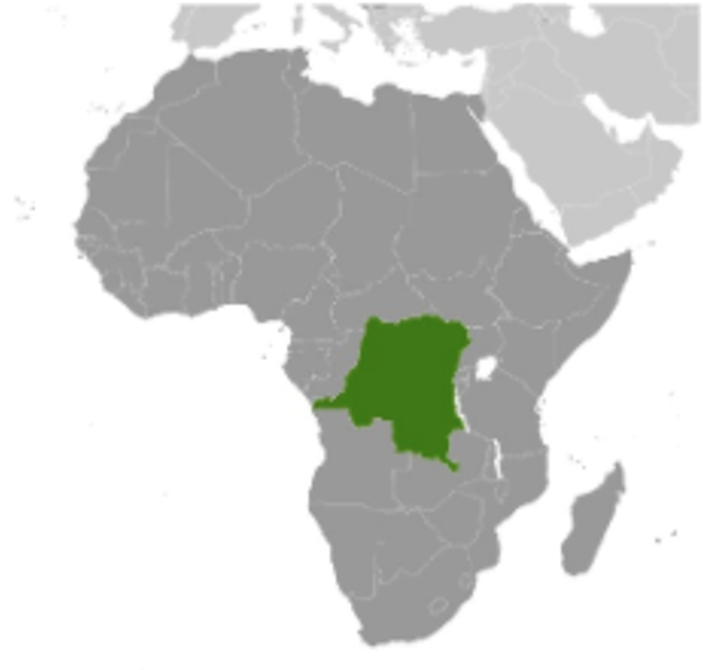
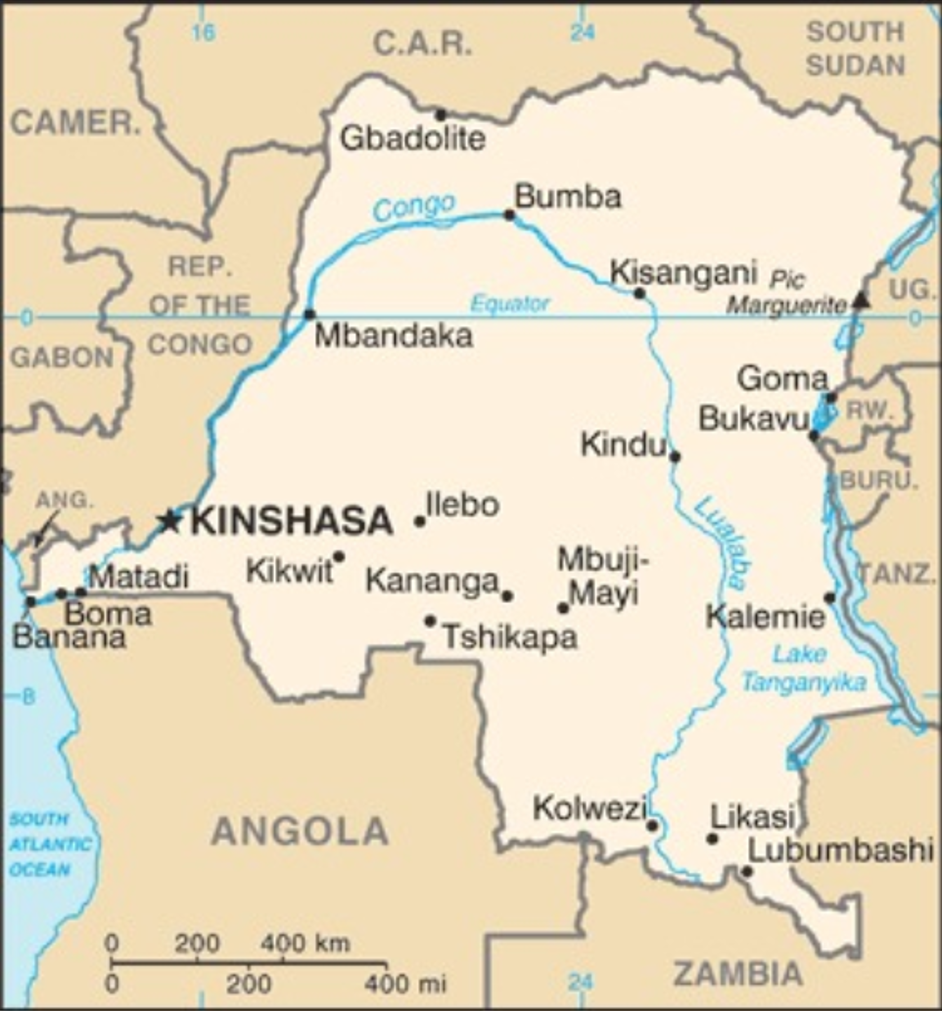
Colors of Connection works in Sub-Saharan Africa and is currently focused on developing sustainable programs in Goma, North Kivu Province of the DRC. Their regional experience includes West and Central Africa, specifically Liberia, Burkina Faso and the DRC, as well as the refugee populations of Côte d’Ivoire and Mali.
The Democratic Republic of the Congo is a large country in central Africa, about a quarter of the size of the US. Population is 102 million, comprised of more than 200 ethnic groups. Of these, Bantu is the largest majority. Although than 200 languages are spoken, French is the official language and there are four national languages: Swahili, Tshiluba, Lingala, and Kongo.
DRC is among the most resource-rich countries in the world, with massive deposits of industrial diamonds, cobalt and copper, one of the largest forest reserves in Africa, and approximately half the hydroelectrical potential of the entire African continent. Despite this, DRC has the third largest population of poor in the world, with three out of four living on less than $1.90 per day. Violence against women is so commonplace that in a 2013 Demographic and Health Survey, three out of four women agreed that a husband was justified in beating his wife in certain circumstances. The eastern region has been called the “rape capital of the world.”
DRC is fraught with government instability and corruption. Former ruler Mobutu Sese Seko oversaw Congo from 1965 to 1997 (when he renamed the country Zaire). He institutionalized corruption to prevent any challenges to his authority and stole billions of dollars while in office. This led to economic collapse in 1996.
The climate varies depending on location: hot and humid in the equatorial river basin, cool and dry in the southern highlands, and cool and wet in the eastern highlands. In addition to the problem with the mineral trade, many Congolese succumb to poaching as a way to escape poverty.
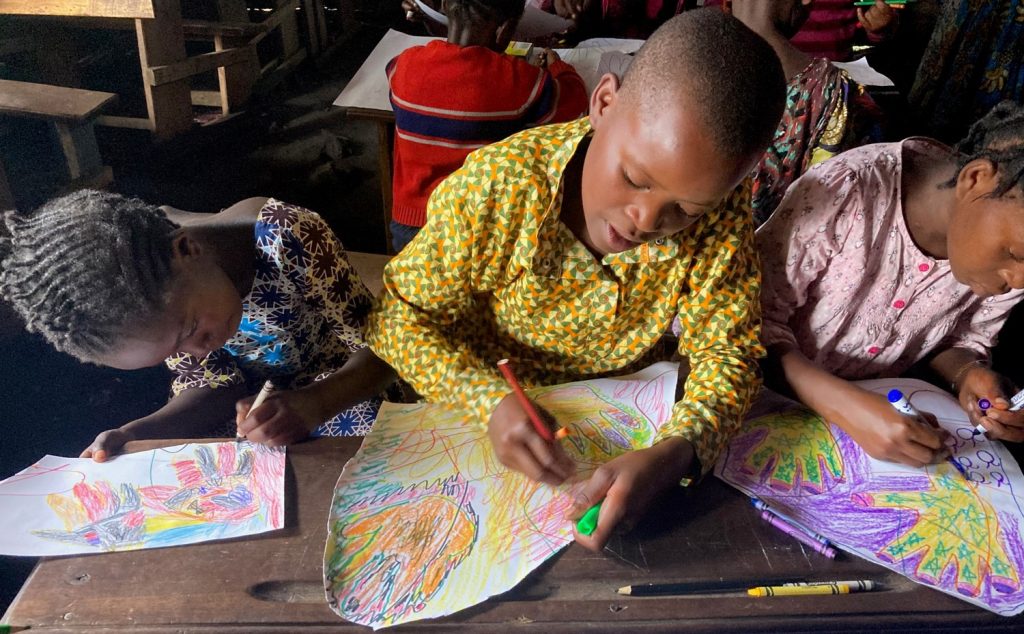
A closer look at art as a tool to address post-conflict trauma
Art therapy is an effective tool that helps improve many mental health issues, including recovery for those who have endured trauma. Numerous studies confirm this, as does the World Health Organization.
Creative exercises and projects can help vulnerable people improve their personal relationships and can also reduce feelings of loneliness and depression. Studies even show that adults and children who have endured sexual abuse, terrorism, war, and other violence can benefit from art therapy.
Another advantage of art therapy is its accessibility. Whether it is a large mural or a pad of paper and a pencil, the tools are often readily available. Once the process gets started, it is easy to become engrossed – drawing, painting, sculpting, or some other art form. In many places around the world, drugs or conventional therapy are rare or nonexistent. Art therapy can become a valid option to make up for this void. On the African continent, art therapy often includes artifacts as important tools to promote physical or psychological recovery. These may include carved objects and statuettes.
Art therapy can help a person who has experienced life-altering distress feel improved in mind, body, and spirit.
Source Materials
https://oneglobalvoice.it/arts/overcoming-post-conflict-trauma-with-art-case-studies-from-drc-rwanda-and-sierra-leone/
https://www.healthline.com/health/art-therapy-for-ptsd#Takeaway
https://www.britannica.com/place/Democratic-Republic-of-the-Congo
https://www.worldbank.org/en/country/drc/overview#1
https://www.cfr.org/global-conflict-tracker/conflict/violence-democratic-republic-congo
https://www.worldvision.org/disaster-relief-news-stories/drc-conflict-facts
https://www.cia.gov/library/publications/the-world-factbook/geos/cg.html
